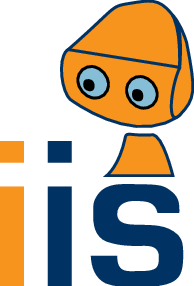User Tools
Site Tools
research:appearance-models
Differences
This shows you the differences between two versions of the page.
| Both sides previous revision Previous revision | |||
|
research:appearance-models [2013/07/16 19:48] c7031007 |
research:appearance-models [2013/07/16 19:50] c7031007 |
||
|---|---|---|---|
| Line 15: | Line 15: | ||
| <html><div style="clear:both"></div><br></html> | <html><div style="clear:both"></div><br></html> | ||
| - | {{ :research:teney-2013-ip.jpg?nolink&300}} We found an interesting application of these models and methods in the **recognition, pose estimation and segmentation of a robotic arm in 2D images** ([[@/publications#Teney-2013-IP|Teney et al. 2013b]]). This task is very challenging due to the smooth and untextured appearance of the robot arm considered (a Kuka LWR). Moreover, the arm is made of articulated links which are absolutely identical in shape and appearance. Candidate detections of those links in the image are provided by the recognition method, and the known physical (kinematic) constraints between the articulated links are enforced by probabilistic inference. Similarly to the traditional articulated models, those constraints are modeled in a Markov random field, and an algorithm based on belief propagation can then identify a globally consistent result for the configuration of all links. | + | {{ :research:teney-2013-ip.jpg?nolink&300}} We found an interesting application of these models and methods in the **recognition, pose estimation and segmentation of a robotic arm in 2D images** ([[@/publications#Teney-2013-IP|Teney et al. 2013b]]). This task is very challenging due to the smooth and untextured appearance of the robot arm considered (a Kuka LWR). Moreover, the arm is made of articulated links which are absolutely identical in shape and appearance. Candidate detections of those links in the image are provided by the recognition method, and the known physical (kinematic) constraints between the articulated links are enforced by probabilistic inference. Similarly to the traditional articulated models, those constraints are modeled as a Markov random field, and an algorithm based on belief propagation can then identify a globally consistent result for the configuration of all links. |
research/appearance-models.txt · Last modified: 2018/09/03 19:35 (external edit)

